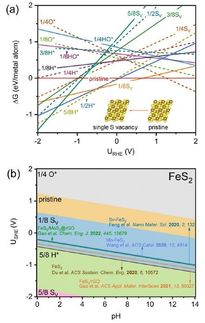Tracking structural regeneration of catalysts for electrochemical CO2 reduction
Advertisement
Recent years have witnessed explosive development in electrochemical CO2 reduction into valuable chemicals or fuels. The CO2 electroreduction is considered as a promising route to utilize renewable electricity from intermittent energy, such as solar, winder, geothermal power, etc. Designing high-performance electrocatalysts is pivotal to tune CO2 activation, thus achieving the highly selective CO2 conversion into target products.

Schematic illustration for the operando regeneration of CeO2/BiOCl into D-CeOx/Bi during CO2 electroreduction. The CO2 electroreduction into formate is exhibited onto the operando regenerative structure.
©Science China Press
However, the rational design of electrocatalysts faces severe challenge, because that most of the catalysts would go through dynamic structural evolution under applied electric field. The ambiguous evolution rules also hinder the uncovering of working mechanism. The established structure-performance relationship based on ex-situ static characterizations does not match realistic catalytic phenomenon. It is highly important yet challenging to operando probe the structural evolution and identify the true catalytically active components under realistic working conditions.
In response to this challenge, in-situ/operando characterization techniques are solid methods to track structural change, identify real active phases and uncover underlying mechanism, thus guiding the structure design of highly active and robust catalysts. In a new research article published in National Science Review, the Li group at East China University of Science and Technology presents a latest advance in comprehensive insights into how the catalyst structure evolves, and how real catalytically active components catalyze CO2 electroreduction by virtue of operando structural identifications at multiscale levels.
"The distinct difference between the operando and ex-situ structural information is displayed, revealing that the real catalytically active phase for CO2 electroreduction is inconsistent with the as-prepared or post-catalyzed catalyst structure. High-performance CO2 electroreduction into formate is actually exhibited onto the operando regenerative structure. More importantly, the operando structural information with atomic level precision is the key to uncover catalytic mechanism," They state.
This work provides insights into structural evolution and activity origin of catalysts under realistic working conditions, and highlights the importance of mechanism study and catalyst design based operando feedback information. The proposed strategy could be widely extended to unravel the structural evolution and working mechanism of catalysts in most of heterogeneous catalytic processes.



























































